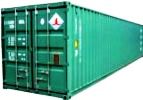Mubychem Group, established in 1976, is the pioneer manufacturer of Potassium Citrate, Pharmaceutical, Fragrance & Flavor chemicals in India. Mubychem Group has several manufacturing facilities spread across Gujarat and Mumbai India and world wide contacts and toll manufacturers. We are exporting globally to countries like USA, Europe, UAE, South Africa, Tanzania, Kenya, Egypt, Nigeria, Uganda, Turkey, Mexico, Brazil, Chile, Argentina, Dubai, Indonesia, Spain etc. |
|
The participating units have one or more accreditations like FDA - GMP approval; ISO-9001 Certified; "REACH" registered; ISO-22000; Kosher Certified; Halal Certified; HACCP. We offer Pure & IP BP USP FCC Food Grade ACS AR Analytical Reagent Grades of Chemicals |
|





Potassium Citrate BP Ph Eur USP FCC Food grade Manufacturers
MSDS of Potassium Citrate BP USP IP FCC Food grade Manufacturers
Potassium Citrate
Technical & Pure.
CAS Number 6100-05-6 & 866-84-2, Also IP BP Ph. Eur. USP ACS AR LR FCC Food Grades

Potassium Citrate BP Ph Eur Grade Specifications
C6H5K3O7,H2O -- 324.4 -- CAS Number 6100-05-6
DEFINITION
Potassium citrate contains not less than 99.0 per cent and not more than the equivalent of 101.0 per cent of tripotassium 2-hydroxypropane-1,2,3-tricarboxylate, calculated with reference to the anhydrous substance.
CHARACTERS
A white, granular powder or transparent crystals, hygroscopic, very soluble in water, practically insoluble in alcohol.
IDENTIFICATION
A. To 1 ml of solution S (see Tests) add 4 ml of water. The solution gives the reaction of citrates.
B. 0.5 ml of solution S gives reaction of potassium.
TESTS
Solution S
Dissolve 10.0 g in carbon dioxide-free water prepared from distilled water and dilute to 100 ml with the same solvent.
Appearance of solution
Solution S is clear and colourless.
Acidity or alkalinity
To 10 ml of solution S add 0.1 ml of phenolphthalein solution. Not more than 0.2 ml of 0.1 M hydrochloric acid or 0.1 M sodium hydroxide is required to change the colour of the indicator.
Readily carbonizable substances
To 0.20 g of the powdered substance to be examined add 10 ml of sulphuric acid and heat in a water-bath at 90 ± 1 °C for 60 min. Cool rapidly. The solution is not more intensely coloured than reference solution.
Chlorides
Dilute 10 ml of solution S to 15 ml with water. The solution complies with the limit test for chlorides (50 ppm).
Oxalates
Dissolve 0.50 g in 4 ml of water, add 3 ml of hydrochloric acid and 1 g of granulated zinc and heat on a water-bath for 1 min. Allow to stand for 2 min, decant the liquid into a test-tube containing 0.25 ml of a 10 g/l solution of phenylhydrazine hydrochloride and heat to boiling. Cool rapidly, transfer to a graduated cylinder and add an equal volume of hydrochloric acid and 0.25 ml of potassium ferricyanide solution. Shake and allow to stand for 30 min. Any pink colour in the solution is not more intense than that in a standard prepared at the same time and in the same manner using 4 ml of a 0.05 g/l solution of oxalic acid (300 ppm).
Sulphates
To 10 ml of solution S add 2 ml of hydrochloric acid and dilute to 15 ml with distilled water. The solution complies with the limit test for sulphates (150 ppm).
Heavy metals
12 ml of solution S complies with limit test A for heavy metals (10 ppm).
Sodium
Not more than 0.3 per cent of Na, determined by atomic emission spectrometry.
Water
4.0 per cent to 7.0 per cent, determined on 0.500 g by the semi-micro determination of water. After adding the substance to be examined, stir for 15 min before titrating.
Potassium Citrate USP Grade Specifications
Potassium Citrate
C6H5K3O7·H2O 324.41
1,2,3-Propanetricarboxylic acid, 2-hydroxy-, tripotassium salt, monohydrate.
Tripotassium citrate monohydrate [CAS 6100-05-6]
Anhydrous 306.40 [CAS 866-84-2]
Potassium Citrate contains not less than 99.0 percent and not more than 100.5 percent of C6H5K3O7, calculated on the dried basis.
Identification— A solution (1 in 10) responds to the tests for Potassium and for Citrate.
Alkalinity— A solution of 1.0 g in 20 mL of water is alkaline to litmus, but after the addition of 0.20 mL of 0.10 N sulfuric acid, no pink color is produced by the addition of 1 drop of phenolphthalein TS.
Loss on drying— Dry it at 180 for 4 hours: it loses between 3.0% and 6.0% of its weight.
Tartrate— To a solution of 1 g in 1.5 mL of water in a test tube add 1 mL of 6 N acetic acid, and scratch the walls of the test tube with a glass rod: no crystalline precipitate is formed.
Heavy metals— Dissolve 2 g in 25 mL of water, and proceed as directed for Test Preparation, except to use glacial acetic acid to adjust the pH: the limit is 0.001%.
Potassium Citrate FCC Food Grade Specifications
Tripotassium Citrate
KOOCCH2C(OH)(COOK)CH2COOK·H2O
C6H5K3O7·H2O Formula wt 324.41
INS: 332(ii) CAS 6100-05-6
DESCRIPTION
Potassium Citrate occurs as transparent crystals or as a white, granular powder. It is deliquescent when exposed to moist air. One gram dissolves in about 0.5 mL of water. It is almost insoluble in alcohol.
Function: Buffer; sequestrant; stabilizer.
REQUIREMENTS
Identification: A 1:20 aqueous solution gives positive tests for Potassium and for Citrate.
Assay: Not less than 99.0% and not more than 100.5% of C6H5K3O7 after drying.
Alkalinity: A 1:20 aqueous solution is alkaline to litmus, but after the addition of 0.2 mL of 0.1 N sulfuric acid to 10 mL of this solution, no pink color appears after the addition of 1 drop of phenolphthalein TS.
Lead: Not more than 2 mg/kg.
Loss on Drying: Between 3.0% and 6.0%.
Potassium Citrate BP USP IP FCC Food Grade Manufacturers:
MUBYCHEM GROUP
CHINCHBUNDER, MUMBAI 400009, INDIA
TEL: (OFFICE) 91-22-23774610, 91-22- 23723564. 91-22-23728264
e-mail: anmol@pcmenergy.com

Copyright and Usual Disclaimer is Applicable.
Global or International Potassium Citrate Suppliers, Exporters, Importers, Manufacturers
If I give you “My Word” Nobody can undo it.
If I sign an “Agreement” my Lawyer will undo it
Perfection is made up of small thing but it is not small.
28-Jun-2025